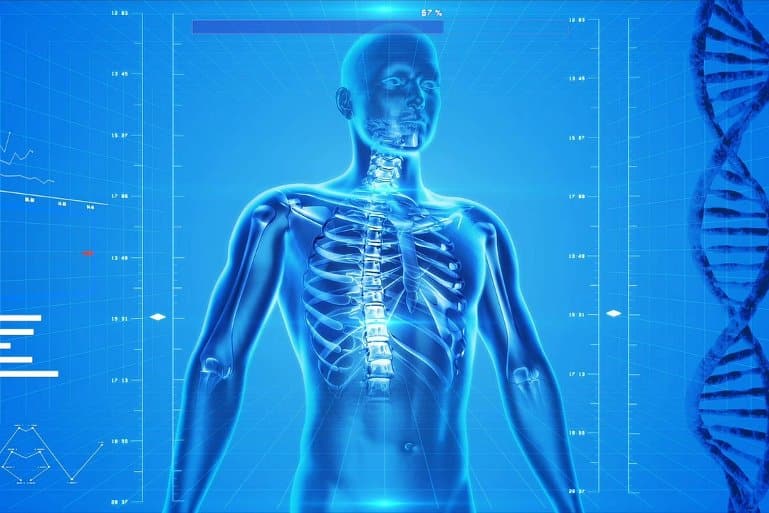Summary: Researchers engineered cells containing customized adhesion molecules that bind to specific cell partners in predictable ways to form complex multicellular entities. The discovery is a major step toward building new tissue and organs.
Source: UCSF
Researchers at UC San Francisco (UCSF) have engineered molecules that act like “cellular glue,” allowing them to direct in precise fashion how cells bond with each other. The discovery represents a major step toward building tissues and organs, a long-sought goal of regenerative medicine.
Adhesive molecules are found naturally throughout the body, holding its tens of trillions of cells together in highly organized patterns. They form structures, create neuronal circuits and guide immune cells to their targets. Adhesion also facilitates communication between cells to keep the body functioning as a self-regulating whole.
In a new study, published in the Dec. 12, 2022, issue of Nature, researchers engineered cells containing customized adhesion molecules that bound with specific partner cells in predictable ways to form complex multicellular ensembles.
“We were able to engineer cells in a manner that allows us to control which cells they interact with, and also to control the nature of that interaction,” said senior author Wendell Lim, Ph.D., the Byers Distinguished Professor of Cellular and Molecular Pharmacology and director of UCSF’s Cell Design Institute. “This opens the door to building novel structures like tissues and organs.”
Regenerating connections between cells
Bodily tissues and organs begin to form in utero and continue developing through childhood. By adulthood, many of the molecular instructions that guide these generative processes have disappeared, and some tissues, like nerves, cannot heal from injury or disease.
Lim hopes to overcome this by engineering adult cells to make new connections. But doing this requires an ability to precisely engineer how cells interact with one another.
“The properties of a tissue, like your skin for example, are determined in large part by how the different cells are organized within it,” said Adam Stevens, Ph.D., the Hartz Fellow in the Cell Design Institute and the first author of the paper.
“We’re devising ways to control this organization of cells, which is central to being able to synthesize tissues with the properties we want them to have.”
Much of what makes a given tissue distinct is how tightly its cells are bonded together. In a solid organ, like a lung or a liver, many of the cells will be bonded quite tightly. But in the immune system, weaker bonds enable the cells to flow through blood vessels or crawl between the tightly bound cells of skin or organ tissues to reach a pathogen or a wound.
To direct that quality of cell bonding, the researchers designed their adhesion molecules in two parts. One part of the molecule acts as a receptor on the outside of the cell and determines which other cells it will interact with. A second part, inside the cell, tunes the strength of the bond that forms. The two parts can be mixed and matched in a modular fashion, creating an array of customized cells that bond in different ways across the spectrum of cell types.
The code underlying cellular assembly
Stevens said these discoveries also have other applications. For example, researchers could design tissues to model disease states, to make it easier to study them in human tissue.

Cell adhesion was a key development in the evolution of animals and other multicellular organisms, and custom adhesion molecules may offer a deeper understanding of how the path from single to multicellular organisms began.
“It’s very exciting that we now understand much more about how evolution may have started building bodies,” he said.
“Our work reveals a flexible molecular adhesion code that determines which cells will interact, and in what way. Now that we are starting to understand it, we can harness this code to direct how cells assemble into tissues and organs. These tools could be really transformative.”
Other authors include Josiah Gerdts, Ki Kim, and Wesley McKeithan of the UCSF Cell Design Institute and the Department of Cellular and Molecular Pharmacology, Jonathan Ramirez and Faranak Fattahi of the Eli and Edythe Broad Center of Regeneration Medicine and Stem Cell Research and the Dept. of Cellular and Molecular Pharmacology, Coralie Tentesaux and Ophir Klein of the UCSF Program in Craniofacial Biology and Department of Orofacial Sciences, and Andrew Harris and Dan Fletcher, of UC Berkeley Dept. of Bioengineering.
About this neuroengineering research news
Author: Press Office
Source: UCSF
Contact: Press Office – UCSF
Image: The image is in the public domain
Original Research: Closed access.
“Programming Multicellular Assembly with Synthetic Cell Adhesion Molecules” by Adam Stevens et al. Nature
Abstract
Programming Multicellular Assembly with Synthetic Cell Adhesion Molecules
Cell adhesion molecules are ubiquitous in multicellular organisms, specifying precise cell-cell interactions in processes as diverse as tissue development, immune cell trafficking, and wiring of the nervous system.
Here, we show that a wide array of synthetic cell adhesion molecules (synCAMs) can be generated by combining orthogonal extracellular interactions with intracellular domains from native adhesion molecules, such as cadherins and integrins. The resulting molecules yield customized cell-cell interactions with adhesion properties similar to native interactions.
The synCAM intracellular domain identity dominates in specifying interface morphology and mechanics, while diverse homotypic or heterotypic extracellular interaction domains independently specify the connectivity between cells.
This toolkit of orthogonal adhesion molecules enables rationally programmed assembly of novel multicellular architectures, as well as systematic remodeling of native tissues. The modularity of synCAMs provides fundamental insights into how distinct classes of cell-cell interfaces may have evolved.
Overall, these tools offer powerful new capabilities for cell and tissue engineering and for systematically studying multicellular organization.







